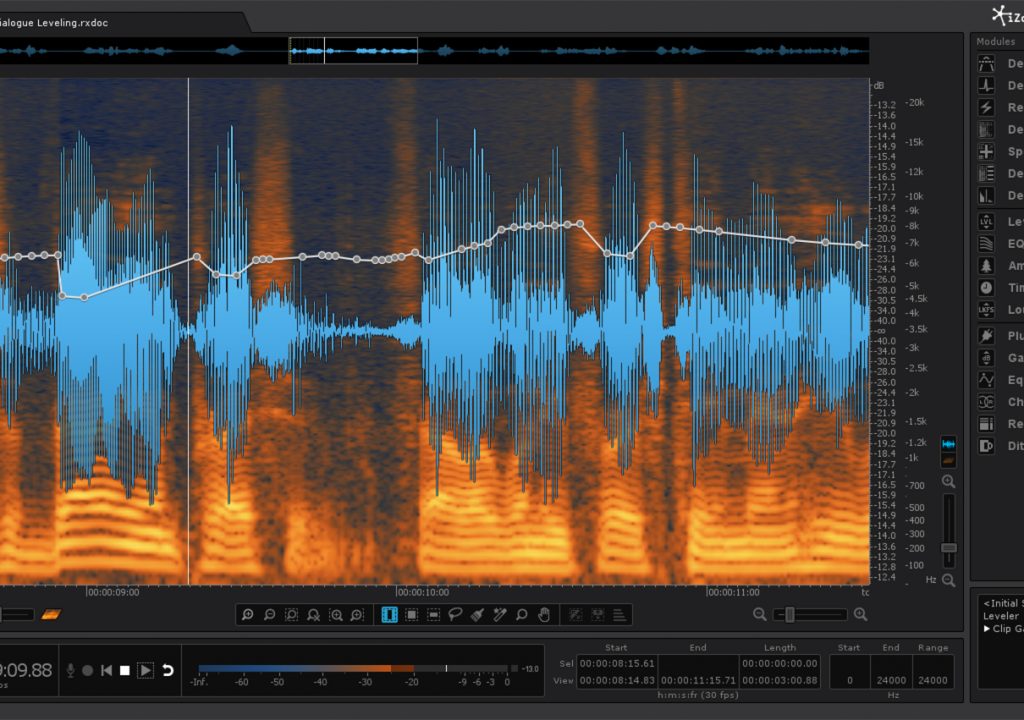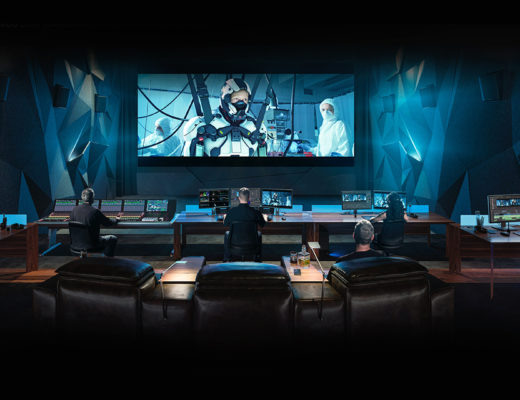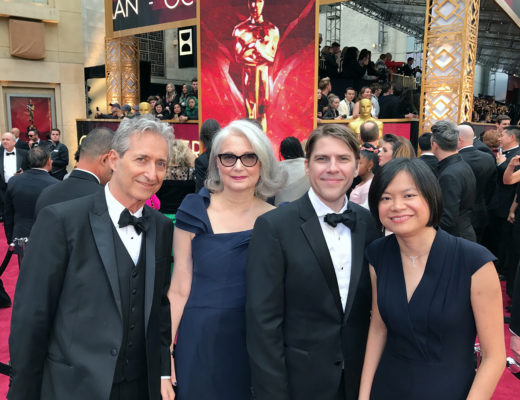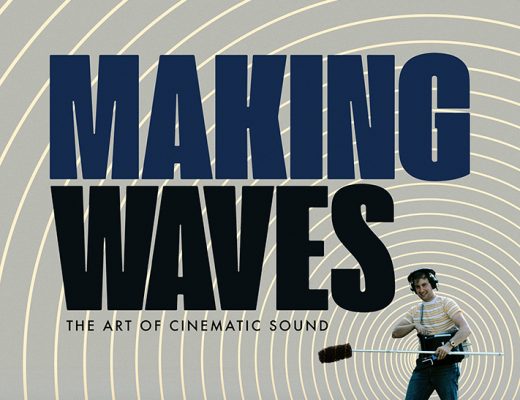A few years back, audio plug in developer iZotope, changed the landscape of digital audio restoration with their groundbreaking software, RX. Several years and several iterations later they’ve released their latest and greatest restoration bundles yet – RX4 and RX4 Advanced.
Software this useful and comprehensive really only comes along once in a very great while. The conception, design, breadth of processing, sonic clarity and ease of use are simply stunning and all sold at a bargain price. For a supervising sound editor like me, RX is the swiss army knife of digital audio restoration and gets used every day, on every single program that I edit and mix. So many tedious mastering issues can now be vanquished with a click of a button.
A quick synopsis for those of you who are not entirely familiar with this software. RX has become the industry standard for audio repair and enhancement. It is used by post production professionals, audio engineers, and video editors to repair, clean and enhance their audio soundtracks.
RX is actually a bundle of a number of separate programs all of which treat a different, problematic aspect of digital audio recordings. It is a deep toolset but some of the specific modules are-
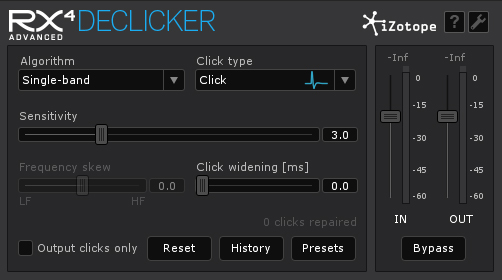
Declicker – a module used to reduce or eliminate clicks and pops
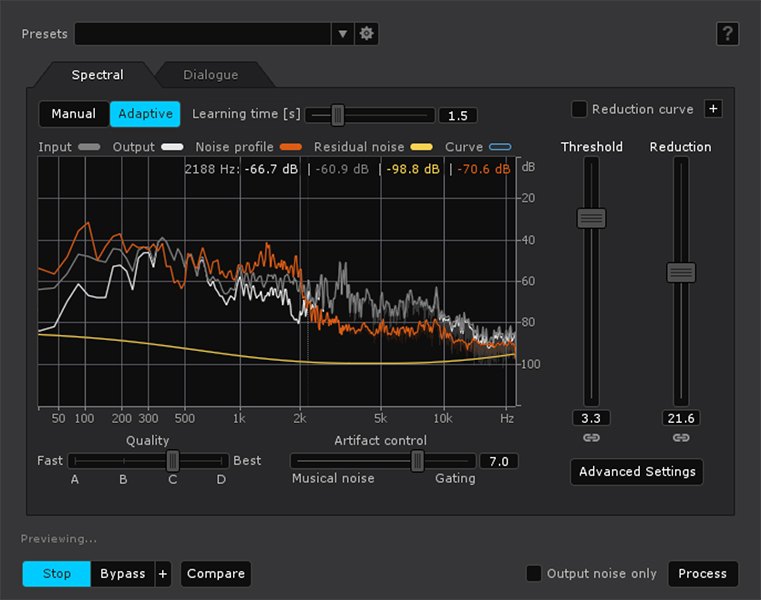
Denoise – a module used to reduce or eliminate various broadband noises
Declip – a module used to reduce or eliminate distortion from improperly recorded audio
Remove Hum – a module used to reduce or eliminate hum
Spectral Repair – a module used to reduce or eliminate specific frequency, time or amplitude noises
Dereverb – a module to attenuate reverberation from recordings
Leveler – a module used to gain recordings to a specific target level
EQ Match – a module used to match the equalization of two different recordings
Ambience Match – a module used to match the ambience of two different recordings
Loudness – a module used to gain recordings to a specific target loudness compliant (LKFS) level
RX is sold as two different sets of software restoration bundles. RX and RX Advanced. The Advanced version is about three times more expensive than RX. As you may imagine with the extra costs come some very important additions. The bundles have also shifted a bit from previous iterations of the bundle. For instance Dialog Denoiser was a part of the RX 3 Advanced bundle but now it is included as a part of the standard RX 4 package. That is an amazing inclusion for a software bundle that retails at $399.
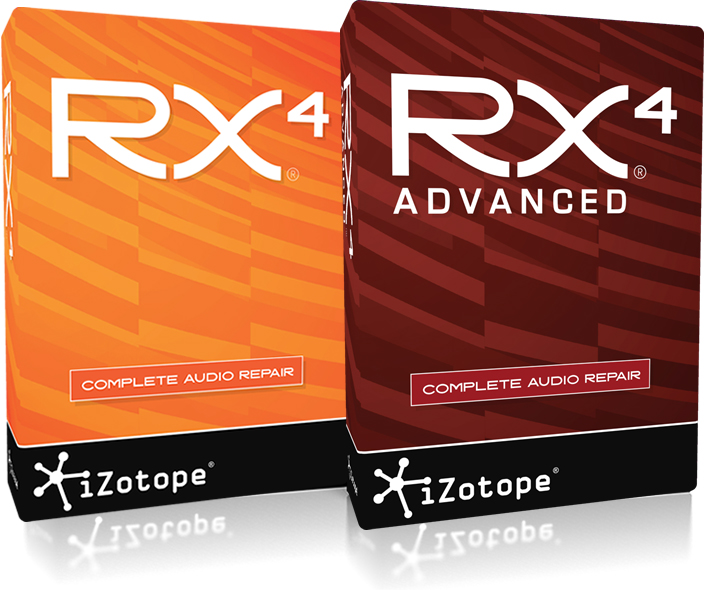 Each of these modules have excellent default starting points for their processing. They also offer highly intuitive tools to adjust the process as you work with the audio and ways to save your own presets for work that may need to be repeated later. As with any noise reduction, you are affecting the entire digital signal so it is important to only do what is needed. One tweak too far and the process itself can be worse than the original noise. There are additional options on some of the modules that allow listening solely to the noises, clicks or hums. At that point the engineer can decide if there is room for more noise reduction or if additional processing can be added without adversely affecting the final file.
Each of these modules have excellent default starting points for their processing. They also offer highly intuitive tools to adjust the process as you work with the audio and ways to save your own presets for work that may need to be repeated later. As with any noise reduction, you are affecting the entire digital signal so it is important to only do what is needed. One tweak too far and the process itself can be worse than the original noise. There are additional options on some of the modules that allow listening solely to the noises, clicks or hums. At that point the engineer can decide if there is room for more noise reduction or if additional processing can be added without adversely affecting the final file.
In days past to remove a click from a file in Pro Tools, for example, one would need to zoom into the offending spike viewed at sample level and then redraw out the spike with a pencil tool. As you may imagine, with recordings filled with clicks and pops, this was a very time and labor intensive process. Now, with the RX Declicker module, a simple highlight and click will seamlessly remove most, if not all, of the clicks in one pass.
Some of the originally introduced modules were able to do things that only the most expensive hardware noise reduction units could attempt to achieve. The Spectral Repair module is one such process. Highlight the offending region containing the noise and then RX will draw it out as a spectral image. By adjusting the colors an offending noise such as a couch, chair hit or other anomaly can be easily seen. Then within that module a number of processes can be used to eliminate the sound. With a few simple mouse clicks all sorts of things can be removed from recordings.
In addition to all of the powerful tools already a part of RX there have been a few new notable additions to the family of modules. Frankly, EQ Match and Ambiance Match are game changers for audio post. Among the many difficult processes for audio post production are matching location audio bites as well as creating “fill” or room ambiance to smooth problematic parts of a sound edit and mix.
EQ Match does exactly what the name says. I am a longtime user of most of the other iZotope audio softwares, particularly their Ozone 5 bundles of EQs and compressors. Also quite impressive audio software. Inside of Ozone there is an EQ match and one that I use frequently. Now it is included as a module in RX. Analyze one recording for its frequency response then highlight and apply to another recording. In practical terms exact matches are difficult if not impossible to attain However with this tool a few mouse clicks gets you very close. Prior to this tool the process included a number of different operations to try to get close including using a frequency analyzer and other EQ software.
Ambiance Match is one of those things, like Spectral Repair that, once it comes along you wondered how you were ever able to work without it. Anyone who’s seen my lectures, read my posts or used my book knows that “fill” and room tone are a huge part of the audio post process. I won’t belabor those points here. Typically, a sound editor is reduced to searching through handles for quiet bits to reassemble into a single file to be used as a fill between gaps in audio segments.
If RX is used in a DAW environment such as Pro Tools, each module is available in a number of different ways. You can use them as “audiosuite” plugins which will create and write a new file once the process is complete. They can also be used as real time plugins as inserts on a track. It is just like any sort of insert used in a mixing environment. Then when the audio is played through the track the plug in can stream its process as it plays. Dialog Denoiser is a very handy tool to be used this way. It is simple to use and sounds terrific, cleaning out the audio as it plays in real time. RX is also available as a stand alone application that can be used without any other audio software as a host.
In regards to RX’s standalone application, one of the new utility additions to the software are a “Monitor” and a “Connect” module. These are used to access the standalone application to play through the DAW of choice. In this method of processing the audio “round trips” from the DAW to the standalone RX application and then after processing is then sent back to the DAW.
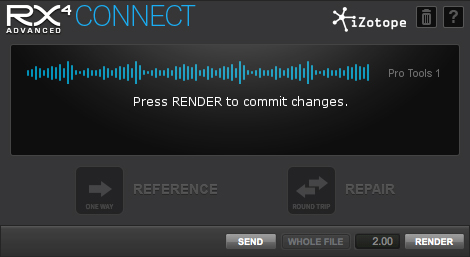
This round tripping is a very useful addition to the program. By using the software like this you can have the audio to be treated with all of the modules available within the single environment. For instance, if you were using audiosuite to process the audio file then you would have to open the Declicker, process, then open the Declipper and process, etc. By using the standalone application you can access all of these processes within the single application. Once you’ve treated the audio file then you sent the final result back into the timeline. It may seem like an inconsequential thing, however, every mouse click takes time and over the course of an edit and mix the time savings can be substantial.
There are a few other features to note as well. Although perhaps these additional tools are more for the video editors than audio mixers they are still very powerful tools. The Leveler module takes an audio file and re-gains it to a single specified level. It is a much different process than a compressor but the intended effect is the same. However, where compressors can cause anomalies such as “breathing and pumping”, Leveler uses gain to level the file. It sounds very good.
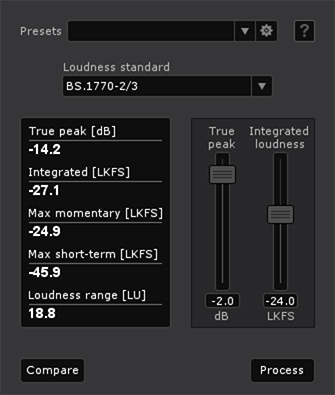
There is also a Loudness module that can be used to comply with CALM Act audio delivery specifications. Within the Loudness module you set the true peak limit, the LKFS target and it will rewrite the complete file for compliance. For picture editors whose mixes must be in compliance this will be a very welcome tool in their arsenal.
One additional tool does not affect the audio at all but I find that it is an indispensable tool for my daily audio workflow. It is their Insight metering tool. It is a very comprehensive meter, that has built in algorithms that can measure for LKFS, true peak and all of the standard (and not so standard) measurements required for proper audio file delivery. I did a live demonstration of this meter for the Los Angeles Post Production Group and it was received with much excitement. Who’d of thought a meter could generate such enthusiasm!
This is a full fledged audio restoration package. It is a toolset that should be in every audio engineers kit. The RX Advanced with the additional Dereverb, Insight meter, EQ and Ambiance Match are all worth the additional investment. Look online for more in depth videos and tutorials that detail each module separately. Better yet go to iZotope’s website and download a free demo and try it for yourself. One of the most advanced noise control audio plugins has gotten even better. Take it for a drive and take advantage of their special promotions and upgrade prices if you have an older version. It is worth every penny that you spend and more.

Filmtools
Filmmakers go-to destination for pre-production, production & post production equipment!
Shop Now